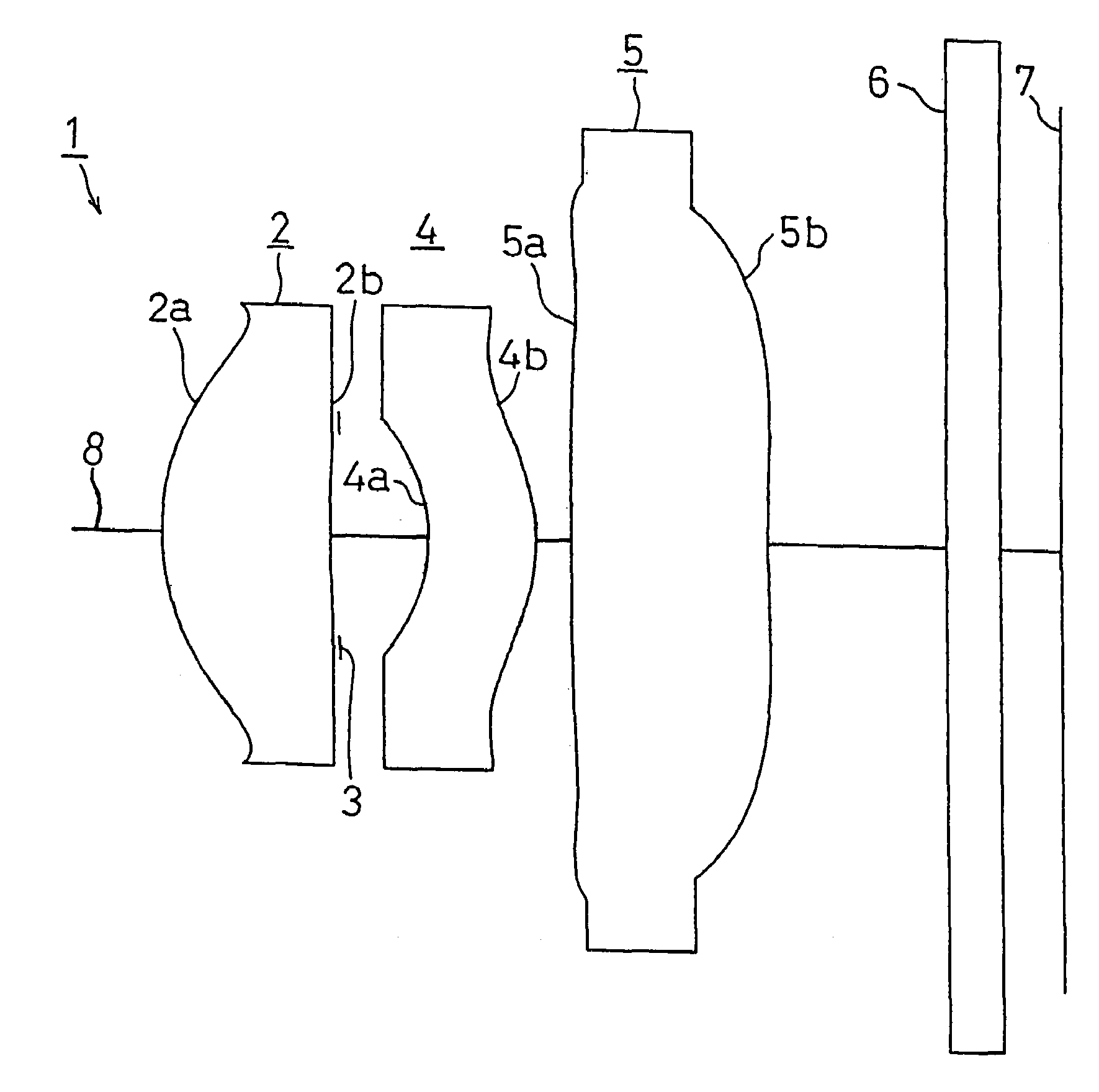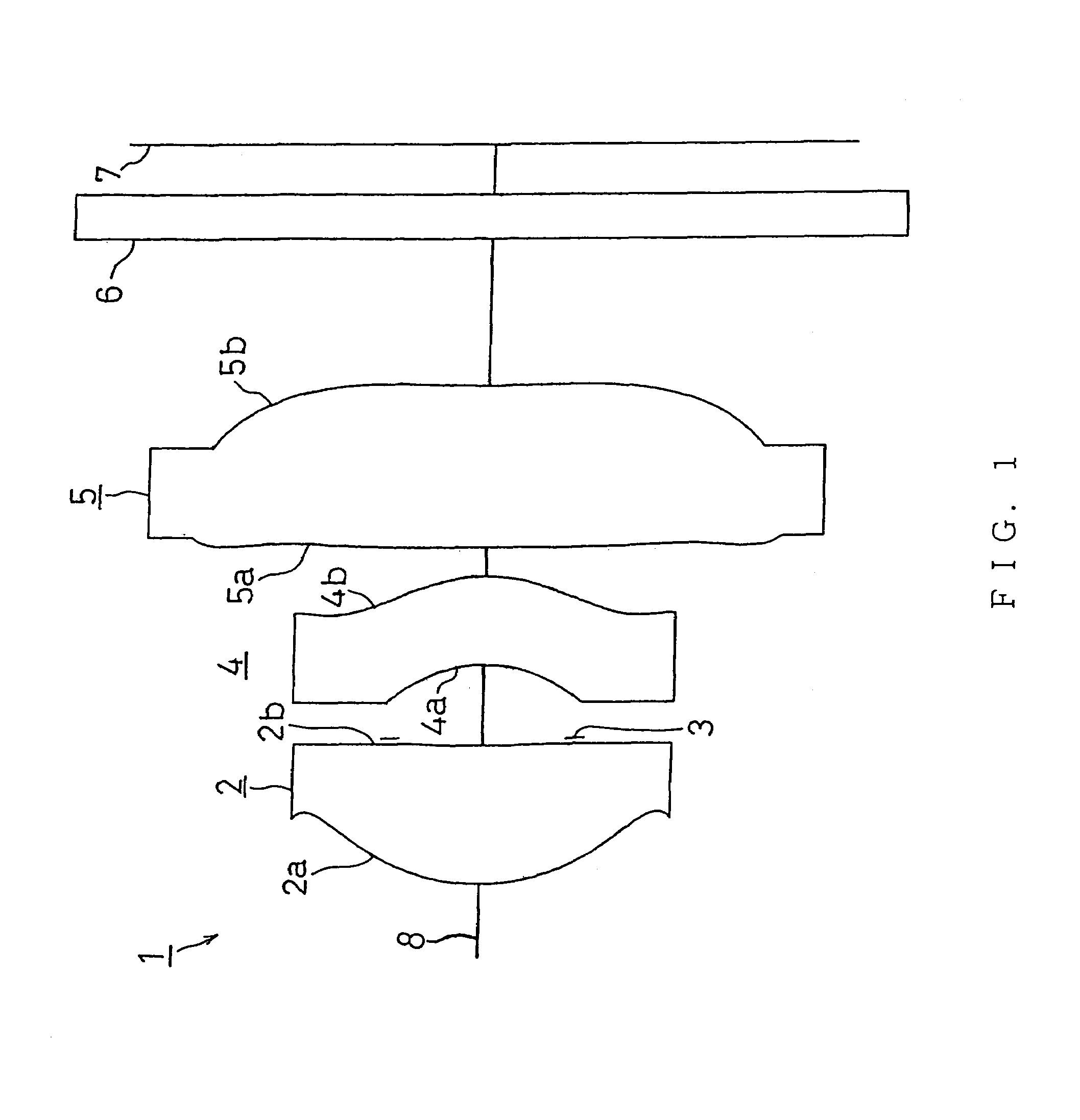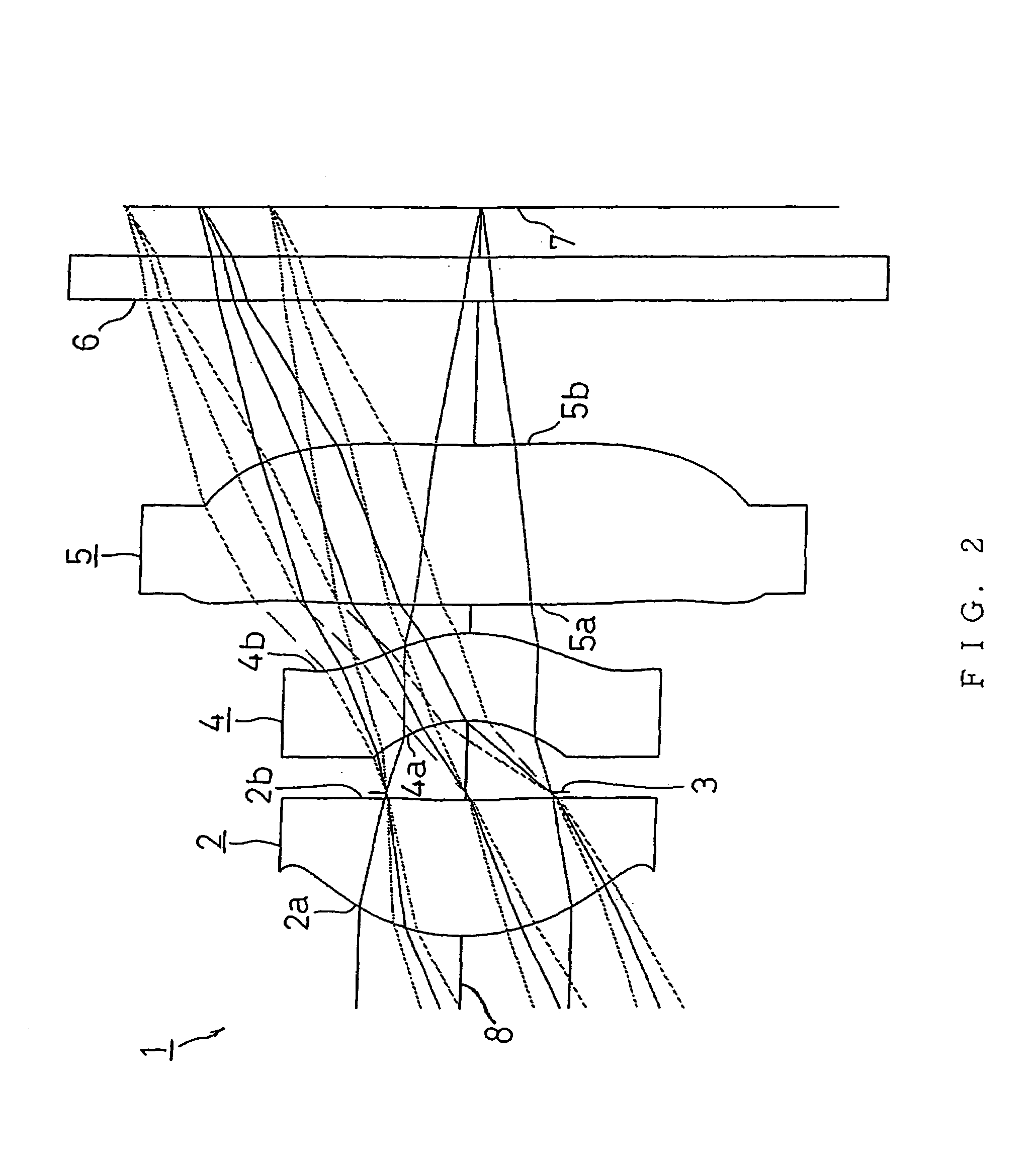Imaging lens
a technology of imaging lens and focusing lens, which is applied in the field of imaging lens, can solve the problems of reducing the size of the lens system, difficult to balance between aberration correction and size reduction, and the back focus distance is too long, so as to achieve excellent optical performance, reduce size and weight, and excellent optical performan
- Summary
- Abstract
- Description
- Claims
- Application Information
AI Technical Summary
Benefits of technology
Problems solved by technology
Method used
Image
Examples
examples
[0110]Next, EXAMPLES of the present invention will be described by referring to FIG. 2 to FIG. 23.
[0111]In the EXAMPLES, F no denotes F number, w denotes a half view angle, and r denotes a center radius curvature. Further, d denotes a distance to the next optical surface, nd denotes the index of refraction to the d line, and vd denotes the Abbe number (d line-based).
[0112]k, A, B, C, and D denote each coefficient in a following expression (10). Specifically, the shape of the aspherical surface of the lens is expressed by the following expression provided that the direction of the optical axis 8 is taken as the Z axis, the direction orthogonal to the optical axis 8 as the X axis (the height direction), the traveling direction of light is positive, k is the constant of cone, A, B, C, and D are the aspherical coefficients, and r is the center radius curvature.
Z(X)=r−1X2 / [1+{1−(k+1)r−2X2}1 / 2]+AX4+BX6+CX8+DX10 (10)
[0113]In the following EXAMPLES, reference code E used for a numerical va...
first example
[0114]FIG. 2 shows FIRST EXAMPLE of the present invention. The imaging lens 1 in FIRST EXAMPLE shown in FIG. 2 is the same imaging lens 1 as that shown in FIG. 1.
[0115]The imaging lens 1 of FIRST EXAMPLE was set under the following condition.
[0116]
(Lens Data)fl = 4.14 mm, F no = 2.8Face Numberrdndvd(Object Point)1 (First Face of First Lens)1.430.951.531056.02 (Second Face of First Lens)8.810.053 (Diaphragm)0.000.504 (First Face of Second Lens)−0.920.601.585030.05 (Second Face of Second Lens)−1.120.206 (First Face of Third Lens)−40.981.101.531056.07 (Second Face of Third Lens)9.521.008 (First Face of Cover Glass)0.000.301.516864.29 (Second Face of Cover Glass)0.00(Image Surface)FaceNumberkABCD1−1.03.9E−29.7E−31.8E−2−3.2E−223.0E+1−6.0E−3−2.4E−12.0E−1043.8E−11.8E−12.1E−11.8E−105−4.3E−11.7E−11.1E−1−2.6E−2−3.2E−36−8.4E+13.3E−2−9.9E−3−1.7E−36.1E−471.0E+1−7.4E−21.8E−2−3.0E−32.3E−8Under such conditions, L / fl = 1.19 was achieved, thereby satisfying the expression (1).f1 / fl = 0.739 was achiev...
second example
[0119]FIG. 4 shows SECOND EXAMPLE of the present invention. The imaging lens 1 of SECOND EXAMPLE shown in FIG. 4 was set under the following condition.
[0120]
(Lens Data)fl = 4.12 mm, F no = 2.8Face Numberrdndvd(Object Point)1 (First Face of First Lens)1.460.951.531056.02 (Second Face of First Lens)10.000.053 (Diaphragm)0.000.504 (First Face of Second Lens)−0.910.621.585030.05 (Second Face of Second Lens)−1.110.206 (First Face of Third Lens)−50.001.101.531056.07 (Second Face of Third Lens)11.111.008 (First Face of Cover Glass)0.000.301.516864.29 (Second Face of Cover Glass)0.00(Image Surface)FaceNumberkABCD1−1.03.8E−28.3E−31.7E−2−3.2E−223.4E+1−5.6E−3−2.4E−12.0E−1043.3E−11.8E−12.1E−12.1E−105−4.3E−11.7E−11.1E−1−2.5E−2−2.7E−364.3E+23.2E−2−9.8E−3−1.6E−36.1E−471.6E+1−7.3E−21.8E−2−3.0E−31.2E−5Under such conditions, L / fl = 1.21 was achieved, thereby satisfying the expression (1).f1 / fl = 0.750 was achieved, thereby satisfying the expression (2).f1 / f2 = 0.0512 was achieved, thereby satisfying ...
PUM
 Login to View More
Login to View More Abstract
Description
Claims
Application Information
 Login to View More
Login to View More - R&D
- Intellectual Property
- Life Sciences
- Materials
- Tech Scout
- Unparalleled Data Quality
- Higher Quality Content
- 60% Fewer Hallucinations
Browse by: Latest US Patents, China's latest patents, Technical Efficacy Thesaurus, Application Domain, Technology Topic, Popular Technical Reports.
© 2025 PatSnap. All rights reserved.Legal|Privacy policy|Modern Slavery Act Transparency Statement|Sitemap|About US| Contact US: help@patsnap.com



